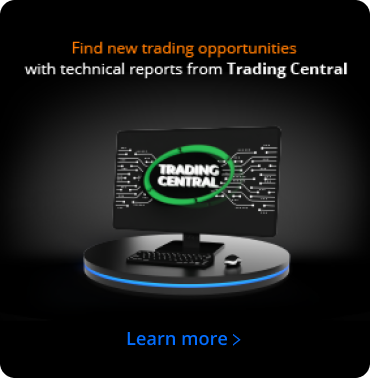การซื้อขายฟิวเจอร์ส
ซื้อขายหรือป้องกันความเสี่ยงโดยไม่มีค่าธรรมเนียมการแลกเปลี่ยน
การเทรดมีความเสี่ยง
ดัชนีจาก
US, สหราชอาณาจักร, สหภาพยุโรป และ เอเชีย
การค้าจาก
$0 ค่าคอมมิชชั่น
ถึง
1: 100 คูณแรง
4 อนาคต
ดัชนีจาก
US, สหราชอาณาจักร, สหภาพยุโรป และ เอเชีย
การค้าจาก
$0 ค่าคอมมิชชั่น
ถึง
1: 100 คูณแรง
4 อนาคต
ซื้อขายตลาดฟิวเจอร์ส
เครื่องหมาย
เสนอราคา
ถาม
สเปรด

*ราคาบนหน้านี้เป็นแบบบ่งชี้เท่านั้น ราคาสำหรับเครื่องมือที่มีความเหมาะสมต่ำกว่า เช่น แต่ไม่จำกัดเพียงคู่สกุลเงินชนิดพิเศษ หุ้น และดัชนี จะไม่รีเฟรชบ่อยเท่าที่เครื่องมือที่เทรดต่อกันอย่างธรรมดา โปรดตรวจสอบในแพลตฟอร์ม MT4/MT5 ของคุณเพื่อดูราคาสดล่าสุด
ฟิวเจอร์สคืออะไร
ฟิวเจอร์สเป็นสัญญาอนุพันธ์ที่บังคับคู่สัญญาที่เกี่ยวข้องในการซื้อหรือขายสินทรัพย์ ณ วันที่ในอนาคตที่กำหนดไว้และราคาที่กำหนด ราคาได้มาจากสินทรัพย์อ้างอิงและลักษณะของสัญญาเหล่านี้ทำให้มีประโยชน์สำหรับการซื้อขายและการป้องกันความเสี่ยง สัญญาฟิวเจอร์สมีวันหมดอายุและไม่มีค่าธรรมเนียมสวอปข้ามคืน ดังนั้นจึงคุ้มค่ามากสำหรับการซื้อขายระยะยาว

ไม่มีการแลกเปลี่ยนข้ามคืน

เหมาะสำหรับการป้องกันความเสี่ยง

ซื้อขายด้วยเลเวอเรจ
การซื้อขายฟิวเจอร์สทำงานอย่างไร
การซื้อขายฟิวเจอร์สทำงานคล้ายกับการซื้อขาย CFD แต่สัญญาฟิวเจอร์สแต่ละสัญญามีวันหมดอายุ คุณสามารถปิดสถานะของคุณได้ตลอดเวลาหรือปล่อยให้สัญญาปิดเมื่อหมดอายุก็ได้ หากคุณต้องการรักษาตำแหน่งของคุณหลังจากวันหมดอายุ คุณสามารถเปิดตำแหน่งใหม่ในสัญญาซื้อขายล่วงหน้าโดยมีวันหมดอายุในภายหลังได้ สัญญาฟิวเจอร์สได้รับการอัปเดตบ่อยครั้งด้วยวันหมดอายุใหม่และวันหมดอายุของสัญญาฟิวเจอร์สแต่ละสัญญาจะถูกระบุด้วยส่วนต่อท้ายสัญลักษณ์ ตัวอย่างเช่น DJ.H24 คือสัญญาซื้อขายล่วงหน้า Dow Jones ซึ่งจะหมดอายุในเดือนมีนาคม 2024 SP.N24 คือสัญญาซื้อขายล่วงหน้า S&P 500 ซึ่งจะหมดอายุในเดือนกรกฎาคม 2024
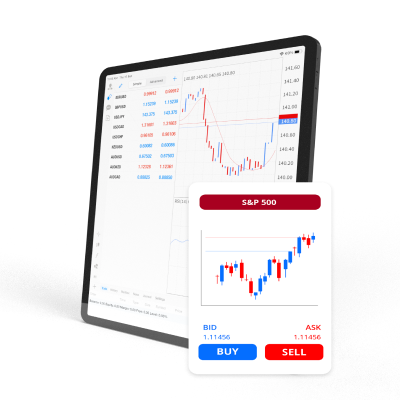
เสนอราคาและสอบถามราคา
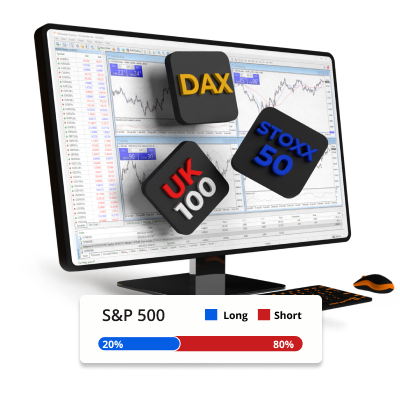
ไปยาวหรือสั้น
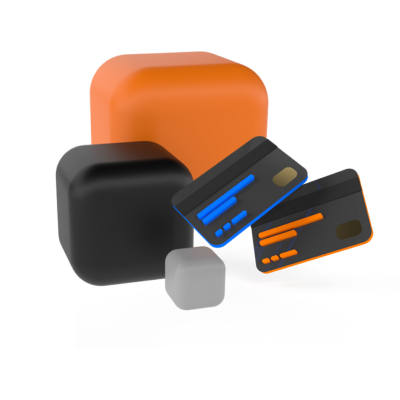
ฟิวเจอร์สมีการซื้อขายเป็นล็อต
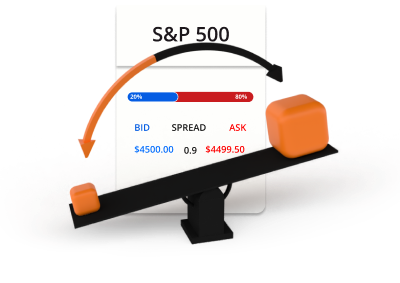
การซื้อขายฟิวเจอร์สเกี่ยวข้องกับเลเวอเรจและมาร์จิ้น
ตัวอย่างการซื้อขายฟิวเจอร์ส
คุณตัดสินใจซื้อฟิวเจอร์ส S&P500 จำนวน 0.1 ล็อตที่ 4,500 โดยใช้เลเวอเรจ 100: 1

สัญญาซื้อขายล่วงหน้า 5 สัญญา x 4,500 = 22,250 เหรียญสหรัฐ
USD 22,250
USD 22,250 / 100 = USD 225
ตอนนี้คุณได้เปิดตำแหน่งซื้อใน S&P500 มูลค่า 22,250 เหรียญสหรัฐแล้ว เนื่องจากการซื้อขายฟิวเจอร์สโดยใช้เลเวอเรจ จึงมีการใช้เพียง $225 เป็นมาร์จิ้นจากบัญชีซื้อขายของคุณ หลังจากนั้นสักระยะ ราคาของ S&P500 จะเคลื่อนไหวและคุณจึงตัดสินใจขาย
สถานการณ์ที่ 1

S&P500 ขยับขึ้นจาก 4500 เป็น 4600 และคุณตัดสินใจขาย
นี่คือวิธีคำนวณกำไรหรือขาดทุนจากการซื้อขาย
P/L = (ราคาปัจจุบัน - ราคาเริ่มต้น) x มูลค่าตำแหน่ง) / ราคาปัจจุบัน
P/L = ((4600 - 4500) × 22,250) / 4,600
P/L = (100 × 22,250) / 4,600
P/L= 483.70
สถานการณ์ที่ 2

S&P500 เคลื่อนลงจาก 4500 เป็น 4400 และคุณตัดสินใจขาย
นี่คือวิธีคำนวณกำไรหรือขาดทุนจากการซื้อขาย
P/L = (ราคาปัจจุบัน - ราคาเริ่มต้น) x มูลค่าตำแหน่ง) / ราคาปัจจุบัน
P/L = ((4400 - 4500) × 22,250) / 4,400
P/L = (-100 × 22,250) / 4,600
P/L = -483.70
ทำไมต้อง TIOmarkets
นี่คือเหตุผลที่คุณควรเลือก TIOmarkets

สเปรดจาก 0.0 pips
เทรดด้วยสเปรดแบบแปรผันต่ำบนบัญชี Raw

การเทรดแบบไม่มีค่าคอมมิชชั่น
เทรดจาก $0 ต่อล็อตบนบัญชี VIP Black หรือ Standard ของเรา

MT4 และ MT5
แพลตฟอร์มการเทรดขั้นสูงสำหรับเดสก์ท็อป เว็บ และมือถือ

การส่งคำสั่งซื้อขายที่รวดเร็ว
การประมวลผลคำสั่งที่มีประสิทธิภาพและเชื่อถือได้ในระดับมิลลิวินาที

Leverage ไม่จำกัด
เทรดด้วยเลเวอเรจสูงสุดแบบไม่จำกัดบนบัญชี Standard

โบนัสความภักดี 30%
รับโบนัสทุกการฝากเข้าบัญชี Standard ของเรา
เริ่มต้นเทรดได้ภายในไม่กี่นาที
นี่คือวิธีการทำงาน

ขั้นตอน 1
ลงทะเบียน
กรอกโปรไฟล์ให้ครบถ้วนและสร้างบัญชี ใช้เวลาเพียงไม่กี่นาที

ขั้นตอน 2
การยืนยันตัวตน
อัปโหลดเอกสารยืนยันตัวตนและที่อยู่ ซึ่งเป็นข้อกำหนดก่อนการถอนเงิน

ขั้นตอน 3
กองทุน
เลือกวิธีการฝากเงินในประเทศและต่างประเทศที่สะดวก และฝากเงินได้ทันที

ขั้นตอน 4
การค้า
ดาวน์โหลดแพลตฟอร์ม โอนเงินเข้าบัญชี เข้าสู่ระบบ และเริ่มต้นการเทรด
การเทรดมีความเสี่ยง
